Related Research Articles
iRiver, stylized IRIVER and formerly as iriver, is a South Korean consumer electronics division owned by Dreamus which markets music and other accessories in its domestic market.

ZEN is a series of discontinued portable media players designed and manufactured by Creative Technology Limited. The players evolved from the NOMAD brand through the NOMAD Jukebox series of music players, with the first separate "ZEN" branded models released in 2004. The last Creative Zen player, X-Fi3, was released at the end of 2011.

A portable media player (PMP) is a portable consumer electronics device capable of storing and playing digital media such as audio, images, and video files. The data is typically stored on a compact disc (CD), Digital Video Disc (DVD), Blu-ray Disc (BD), flash memory, microdrive, or hard drive; most earlier PMPs used physical media, but modern players mostly use flash memory. In contrast, analogue portable audio players play music from non-digital media that use analogue signal storage, such as cassette tapes or vinyl records.
Archos is a French multinational electronics company that was established in 1988 by Henri Crohas. Archos manufactures tablets, smartphones, portable media players and portable data storage devices. The name is an anagram of Crohas' last name. Also, in Greek (-αρχος), it's a suffix used in nouns indicating a person with power. The company's slogan has been updated from "Think Smaller" to "On The Go", and the current "Entertainment your way".

iAUDIO is the brand name for a range of portable media players produced by Korean consumer electronics and software corporation Cowon Systems, Inc.
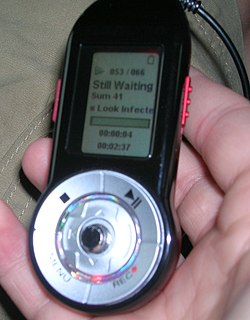
Lyra is a series of MP3 and portable media players (PMP). Initially it was developed and sold by Indianapolis-based Thomson Consumer Electronics Inc., a part of Thomson Multimedia, from 1999 under its RCA brand in the United States and under the Thomson brand in Europe. There were also RCA/Thomson PMPs without the Lyra name, such as the RCA Kazoo (RD1000), RCA Opal and RCA Perl. In January 2008, Thomson sold its Consumer Electronics part including the RCA brand and Lyra line to AudioVox. RCA-branded PMPs are still being made today in its domestic market but no longer under the Lyra name. The Lyra was an early pioneer in digital audio players, although in later years most of its output were OEM products.

Yepp was Samsung Electronics' digital audio player brand until Samsung decided to retire most of their family brands in February 2011. From then on, their MP3 players were simply branded "Samsung" worldwide until they discontinued all of them in late 2013. The brand included a wide range of hard-drive based as well as flash-memory based players. The name is claimed to be an acronym for "young, energetic, passionate person".

The iRiver Clix is a portable media player that was developed and sold by iriver through two generations. The Clix was originally known as the U10, released in 2005. The next year it was revised and essentially rebranded to Clix. A second generation player, often called the Clix 2, was released in 2007, and later a minor revision called Clix+. The players are navigated by four buttons embedded on its sides, referred to as D-Click.

My Life Online (Mylo) was a device created and marketed by Sony for portable instant messaging and other Internet-based communications, browsing Internet web sites using the Opera web browser and playback and sharing of media files. The pocket-sized, tablet-shaped handheld device, which debuted in 2006, had a screen which slid up to reveal a QWERTY keyboard. The brand name 'Mylo' means My Life Online. Using Wi-Fi instead of cellular networks, the Mylo was targeted to the 18–24 age group.
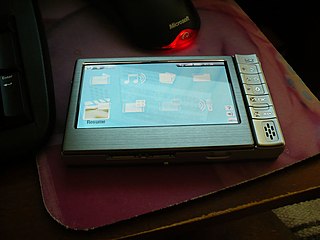
Archos Generation 4 were a series of Archos portable media players released from 2006 through 2007. The Generation 4 series is an upgrade to the previous AV and Gmini series, primarily the AV500s. There are 8 models in all. All players are Microsoft PlaysForSure compatible.
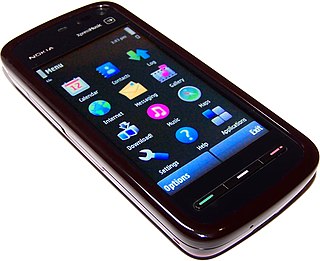
Nokia 5800 XpressMusic is a smartphone part of the XpressMusic line, announced by Nokia on 2 October 2008 in London and started shipping in November of that year. Code-named "Tube", it was the first touchscreen-equipped S60 device by Nokia – essentially it was the first device to run Symbian^1, also known as S60 5th Edition, the touch-specific S60-based platform created by the Symbian Foundation. The touchscreen features tactile feedback.

Samsung GT-i8910 Omnia HD is a smartphone manufactured by Samsung Electronics, first announced at MWC 2009 on February 18, 2009. The device was the first phone capable of playing and recording 720p HD video. It runs on the S60 5th Edition (Symbian^1) platform, the only Samsung device to do so.
The Samsung SGH-i907, marketed as the Samsung Epix in the United States by AT&T Wireless, is a Windows Mobile-based quad-band GSM smartphone manufactured by Samsung.
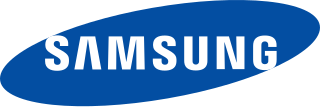
The Samsung Wave is a smartphone developed and produced by Samsung Electronics. It is the first smartphone to run the Bada operating system developed by Samsung Electronics, which was commercially released on May 24, 2010. The Wave is a touchscreen phone powered by Samsung's "Hummingbird" CPU (S5PC110), which includes 1 GHz ARM Cortex-A8 CPU and a built-in PowerVR SGX 540 graphics engine. It also has a "Super AMOLED" screen and 720p high-definition video capture capabilities. Due to shortage of Super AMOLED screens, Samsung released a successor to the device called Wave II and ceased production of the original S8500 model.

The Samsung Wave II S8530 is the successor of the Samsung Wave S8500 smartphone running the Bada 1.2 operating system designed by Samsung, which was commercially released in October 2010. The Wave is a slim touchscreen phone powered by Samsung's "Hummingbird" CPU, which includes a 1 GHz ARM Cortex-8 CPU and a built-in PowerVR SGX 540 graphics engine, "Super LCD" display and 720p high-definition video capture capabilities.SlashGear speculated that the phone could be the result of a rumored AMOLED panel shortage.
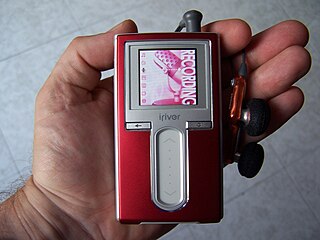
The H10 is a series of portable audio players developed by iRiver, coming in multiple capacities and sizes. The player first went on sale in South Korea in December 2004 and rolled out internationally soon afterwards. The H10 series are hard disk based players coming in a 20 gigabyte form, along with smaller variants of 5 or 6 gigabytes. All versions come with a colour screen as well as voice recording and FM radio. Unlike most other iRiver products, the H10 series does not play Ogg Vorbis. However, the device works well with the Rockbox alternative firmware which does play Ogg Vorbis.
The Samsung Wave III S8600 is a smartphone running the Bada 2.0 operating system designed by Samsung, which was commercially released on August, 2011. The Wave is a slim touchscreen phone powered by "Scorpion" CPU, which includes 1.4 GHz ARM Cortex-8 CPU and a powerful graphics engine, "Super LCD" screen and 720p high-definition video capture capabilities. Shortage of Super AMOLED screens was one of the primary reasons for the release of this model.
The iRiver Spinn is a portable media player that was developed and sold by iRiver. It was announced at the 2008 Consumer Electronics Show and shipped later that year. It was a successor to the iRiver Clix 2.
The iRiver X20 is a small, flash memory based portable media player (PMP) from iRiver. It was announced at the 2007 Consumer Electronics Show. Initially only 2 and 4 GB versions were announced but soon an 8 GB was also released. It is almost identical to the Insignia NS-DV, a brand from Best Buy.
References
- 1 2 "Iriver P7 review: Iriver P7".
- ↑ "4.3-inch P7 highlights iriver's CES 2009 PMP lineup".
- 1 2 3 4 5 "IRiver P7 8GB".
- 1 2 3 "Home review". 28 July 2009.
- 1 2 "Iriver P7". 20 April 2009.
- 1 2 "IRiver P7 review".